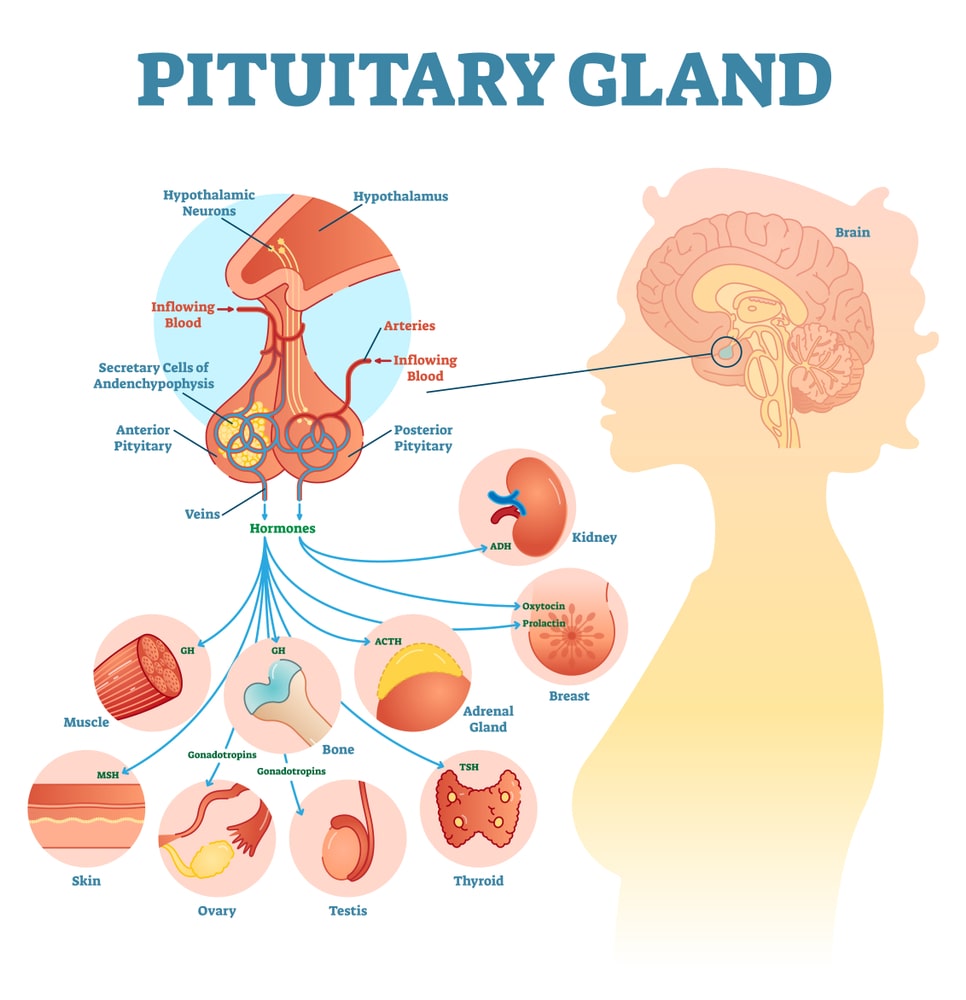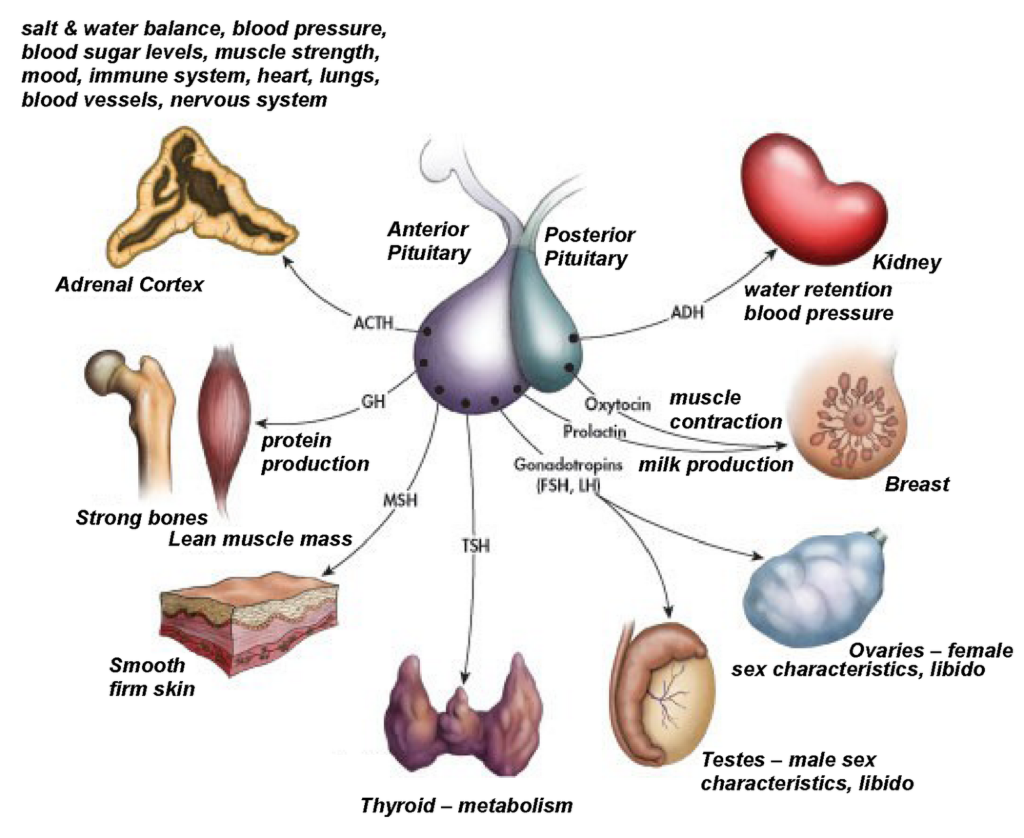Anatomy Of Pituitary Gland Presentation
| Introduction to the Anatomy of Pituitary Gland | ||
|---|---|---|
| The pituitary gland is a small, pea-sized gland located at the base of the brain. It is often referred to as the "master gland" due to its role in regulating various bodily functions. The gland is divided into two main parts: the anterior pituitary gland and the posterior pituitary gland. | ||
| 1 | ||
| Anterior Pituitary Gland | ||
|---|---|---|
| The anterior pituitary gland is the larger front portion of the gland. It is responsible for producing and releasing several important hormones, including growth hormone, prolactin, adrenocorticotropic hormone (ACTH), thyroid-stimulating hormone (TSH), follicle-stimulating hormone (FSH), and luteinizing hormone (LH). These hormones play crucial roles in growth, metabolism, reproduction, and the regulation of other endocrine glands. | ||
| 2 | ||
| Posterior Pituitary Gland | ||
|---|---|---|
| The posterior pituitary gland is the smaller back portion of the gland. It does not produce hormones but stores and releases two important hormones: oxytocin and antidiuretic hormone (ADH). Oxytocin is involved in childbirth, breastfeeding, and social bonding, while ADH regulates water balance in the body. | ||
| 3 | ||
| Hypothalamus-Pituitary Relationship | ||
|---|---|---|
| The pituitary gland is closely connected to the hypothalamus, a region of the brain. The hypothalamus controls the release of hormones from the pituitary gland by sending signals through a network of blood vessels. This connection allows the hypothalamus to regulate the pituitary gland's hormone production and release. | ||
| 4 | ||
| Blood Supply to the Pituitary Gland | ||
|---|---|---|
| The pituitary gland receives its blood supply from two sources: the superior hypophyseal artery and the inferior hypophyseal artery. These arteries branch off from the internal carotid arteries, which are major blood vessels in the neck and head. The blood supply is essential for delivering oxygen and nutrients to the gland for proper function. | ||
| 5 | ||
| Structure of the Pituitary Gland | ||
|---|---|---|
| The pituitary gland is divided into two main lobes: the anterior lobe (adenohypophysis) and the posterior lobe (neurohypophysis). The anterior lobe consists of glandular tissue, while the posterior lobe contains nerve fibers and nerve endings. Both lobes are surrounded and supported by a thin connective tissue layer called the pituitary capsule. | ||
| 6 | ||
| Pituitary Gland Hormones | ||
|---|---|---|
| The pituitary gland secretes a variety of hormones that have specific targets in the body. Examples include growth hormone (GH), which promotes bone and tissue growth, and adrenocorticotropic hormone (ACTH), which stimulates the adrenal glands to release cortisol. Each hormone has unique functions and plays a crucial role in maintaining overall health and homeostasis. | ||
| 7 | ||
| Pituitary Disorders | ||
|---|---|---|
| Disorders of the pituitary gland can lead to hormonal imbalances and various health problems. Examples of pituitary disorders include pituitary adenomas (tumors), hypopituitarism (insufficient hormone production), and hyperpituitarism (excessive hormone production). These disorders often require medical intervention and treatment to restore hormone balance and manage symptoms. | ||
| 8 | ||
| Diagnostic Techniques for Pituitary Disorders | ||
|---|---|---|
| Several diagnostic techniques can be used to evaluate pituitary gland function and detect abnormalities. These include blood tests to measure hormone levels, imaging studies (such as MRI or CT scans) to visualize the gland's structure, and dynamic function tests to assess hormone responses. Accurate diagnosis is crucial for appropriate management and treatment of pituitary disorders. | ||
| 9 | ||
| Conclusion | ||
|---|---|---|
| The pituitary gland is a vital component of the endocrine system, regulating hormone production and maintaining homeostasis in the body. Understanding the anatomy and function of the pituitary gland is essential for diagnosing and managing pituitary disorders. Ongoing research continues to expand our knowledge of this fascinating gland, leading to advancements in treatment and improved patient outcomes. | ||
| 10 | ||








